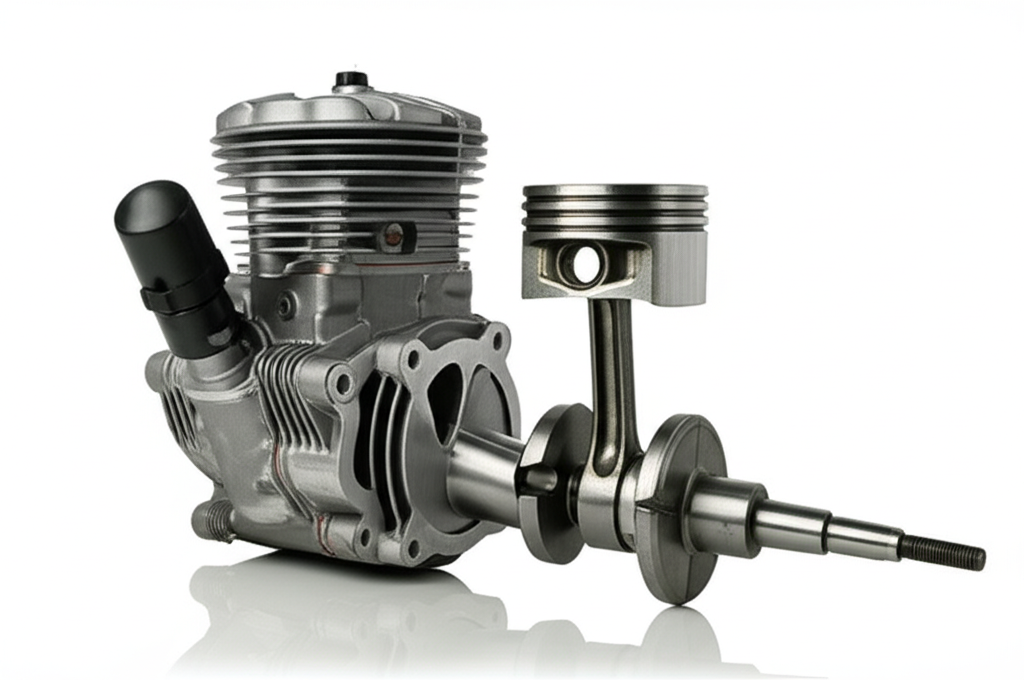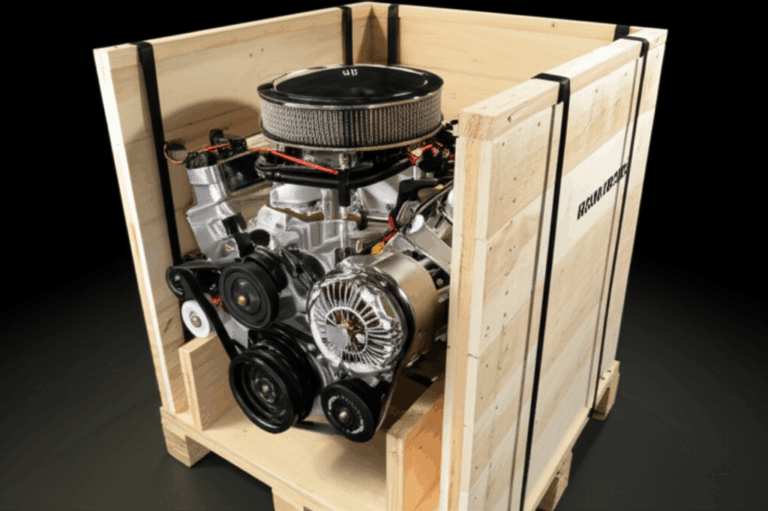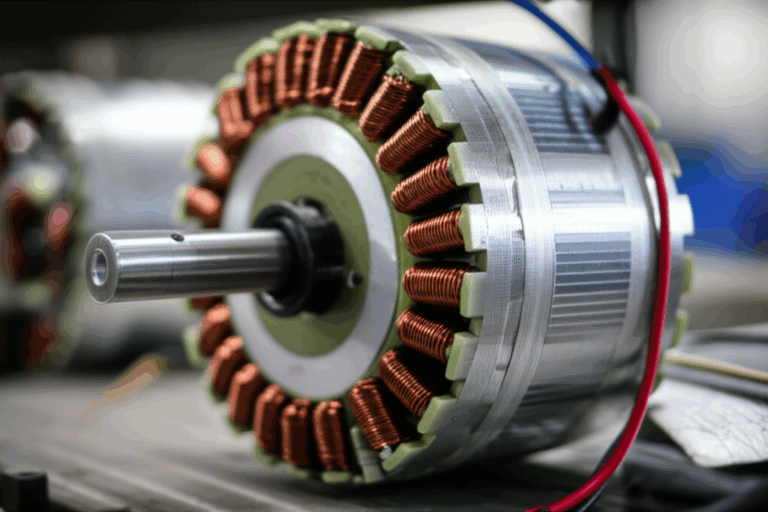
What Is a CC Motor? Your Guide to Engine Displacement
A clear guide to what “CC” means in engines. You will learn how cubic centimeters define engine size, how CC links to power and speed, and how to pick the right engine for your ride. Read this if you want to buy a scooter, a motorcycle, an ATV, a go‑kart, a lawnmower, or a car. I will keep it simple and I will share real examples.
Table of Contents
- What does “CC” stand for in engines?
- How is engine displacement measured?
- Does higher CC mean more power and speed?
- How does CC affect fuel efficiency and emissions?
- What is the difference between 125cc and 250cc?
- How do bore, stroke, and cylinders change CC?
- Which CC ranges fit scooters, motorcycles, cars, ATVs, and lawnmowers?
- How do CC and liters compare?
- How do you pick the right engine size for your needs?
- Are electric motors measured in CC?
- What else affects engine performance beyond CC?
- What about engine noise, vibration, lifespan, and upkeep costs?
- What is inside an engine and how does it work?
- Can you tune or upgrade engines by CC?
- What is the future of engines?
- References
- FAQ
- Key takeaways
What does “CC” stand for in engines?
Problem: You see “125cc” or “2.0L” in ads yet you do not know what that means. You worry you might choose the wrong motor.
Agitate: Pick a size too small and the bike will feel slow on hills. Pick a size too big and you may pay more for gas and insurance. You also might face license rules you did not expect.
Solution: CC stands for cubic centimeters. It is the engine displacement of an internal combustion engine (ICE). That is the total engine volume inside all the cylinders that the pistons sweep up and down. Think of CC as the size of the “lungs” of the engine. Bigger lungs can breathe more air and fuel. That often means more power output.
In short, CC is a core engine specification. It helps you compare engine capacity across a motorcycle, scooter, car engine, ATV, go‑kart, or a lawnmower. Sellers list CC because it shapes performance metrics like horsepower (HP), torque, and fuel economy.
How is engine displacement measured?
Problem: The math sounds scary.
Agitate: If the numbers confuse you you could overpay for features you do not need.
Solution: It is simple. We measure the round hole of each cylinder (the bore). We also measure how far the piston moves up and down (the stroke). Then we use a basic formula to get the piston displacement for one cylinder. Multiply by the number of cylinders to get total CC.
- Displacement per cylinder ≈ (π/4) × bore² × stroke
- Total displacement = displacement per cylinder × number of cylinders
That is it. The crankshaft and connecting rod convert the piston’s up and down motion to spin. The space above the piston is the combustion chamber. The sum of all cylinders gives you the CC of the engine.
Does higher CC mean more power and speed?
Problem: You want a fast ride so you aim for the biggest CC you can afford.
Agitate: Bigger CC can mean more horsepower and torque yet it is not always a straight line. Two engines with the same CC can feel very different. You might get less speed than you hoped for.
Solution: In general a higher CC engine can pull in more air and fuel. That often gives you more HP and torque. This helps with vehicle speed, quick starts, and towing. Still many other parts play a role.
- Engine design and engine architecture matter. A smart design can beat a bigger but less efficient one.
- A turbocharger or supercharger can boost a small engine to make big power.
- The compression ratio and the Engine Control Unit (ECU) tune matter too.
- Two‑stroke engines and four‑stroke engines make power in different ways.
Rule of thumb: higher CC often equals more power. Yet smart design can bend the curve. Always check both HP and torque. Also check the power to weight ratio.
How does CC affect fuel efficiency and emissions?
Problem: Gas costs money and clean air matters.
Agitate: A big engine can drink more fuel and make more emissions. That can raise your bills and your impact on the planet.
Solution: Lower CC often means better fuel efficiency and fuel economy in daily use. Less volume means less air and fuel per cycle. That can cut emissions. Yet modern tech changes the story.
- Small engines with direct injection, variable valves, and turbos can make strong power with good economy.
- Emissions regulations push makers to clean up exhaust systems.
- Good cooling systems and lubrication systems help engines run smooth and clean.
Do a full check. Look at CC, but also mpg or L/100 km, and the emissions rating. Ask how the engine is cooled and tuned.
What is the difference between 125cc and 250cc?
Problem: You see two bikes. One is 125cc. One is 250cc. Which one fits you?
Agitate: If you guess wrong you might fear highway speeds or the bike may feel heavy in traffic.
Solution: A 125cc bike or scooter is light and easy. It is great for city streets and short trips. A 250cc bike feels stronger. It can hold highway speed better and climb hills with less strain.
- 125cc to 250cc jump: you often see more torque in the mid range and a higher top speed.
- Insurance and license limits may change with CC. Check local rules. Many places limit new riders to 125cc for a time. Some places use power or kW limits instead of CC.
Pick based on where you ride and your skill. I learned on a 150cc scooter in city traffic. I later moved to a 300cc bike when I did long rides on the highway.
How do bore, stroke, and cylinders change CC?
Problem: You hear “bore and stroke” and you tune out.
Agitate: You might miss the feel you want if you do not know this.
Solution: The bore is the width of the cylinder. The stroke is how far the piston travels. A big bore with a short stroke can rev fast and loves high RPM. A small bore with a long stroke often gives strong torque at low RPM. Add more cylinders and the engine can run smoother and make more power for the same CC.
- The engine block, cylinder head, and valves all shape how air flows.
- Spark plugs, fuel injectors, or a carburetor feed the mix.
- The drivetrain and transmission help deliver the pull to the wheels.
These parts all shape how CC turns into motion. The same CC can feel calm or wild based on this mix.
Which CC ranges fit scooters, motorcycles, cars, ATVs, and lawnmowers?
Problem: You want a simple map from use to CC.
Agitate: Guessing can waste money or leave you with a ride you do not enjoy.
Solution: Use this quick chart. It shows typical engine size classes and vehicle classification by CC. Horsepower ranges are rough. Design changes the numbers.
| Vehicle Type | Typical CC Range | Approx HP Range | Primary Use Cases | CC‑Influenced Traits |
|---|---|---|---|---|
| Scooters/Mopeds | 50cc–250cc | 3–20 HP | City trips, errands | Light, agile, lower top speed |
| Entry Motorcycles | 125cc–400cc | 10–45 HP | New riders, city, some highway | Easy to handle, good mpg |
| Mid‑Range Motorcycles | 400cc–800cc | 45–90 HP | Commute, touring, sport | Balanced performance |
| High‑Performance/Big Twins | 800cc–1800cc+ | 90–200+ HP | Sport, cruisers, long tours | High power and torque |
| Small City Cars | 0.8L–1.5L (800–1500cc) | 60–110 HP | Urban driving | Good economy, easy parking |
| Compact/Family Cars | 1.5L–2.5L | 110–200 HP | Daily use, highways | Versatile and efficient |
| SUVs/Light Trucks | 2.5L–4.0L+ | 180–300 HP | Family, towing | More pull and space |
| ATVs/UTVs | 90cc–1000cc | 5–90+ HP | Trails, work | Torque for rough ground |
| Go‑Karts | 50cc–400cc | 2–15 HP | Fun and racing | Low weight thrills |
| Lawnmowers | 100cc–250cc | 3–8 HP | Home yard care | Simple and reliable |
Note: Some small cars use a 1.0L turbo. That can match old 1.6L cars for power with better mpg.
How do CC and liters compare?
Problem: You see both CC and liters and you wonder how they match.
Agitate: Specs feel fuzzy if you cannot compare units.
Solution: It is easy. 1 liter (L) = 1000 cubic centimeters (cc). A 1500cc engine is 1.5L. Many motorcycles use CC. Many cars use liters. Some use both.
- 1000cc = 1.0L
- 750cc = 0.75L
- 2500cc = 2.5L
Once you learn this you can compare any engine size.
How do you pick the right engine size for your needs?
Problem: You want the best fit for budget and use.
Agitate: A bad match can raise costs or lower joy. You might also face insurance hikes or licensing issues.
Solution: Make a quick plan.
- Think about where you ride or drive. City streets favor smaller CC. Highways and hills favor bigger CC.
- Check your experience level. New riders do well on 125cc to 300cc.
- Check budget, insurance, and local regulations or emissions regulations.
- Look at power to weight ratio, not CC alone.
- Ask about engine reliability, engine lifespan expectations, and engine maintenance.
I use a simple rule. Start small. Learn. Then size up if needed.
Are electric motors measured in CC?
Problem: You want to compare gas engines and electric motors.
Agitate: You cannot use CC for electric motors. This makes shopping hard.
Solution: Electric motors do not use CC because there are no cylinders. Use kilowatts (kW), horsepower, and torque instead. Electric motors give max torque from very low RPM so they feel quick. When you shop electric, parts like the stator and rotor matter. Good motor core laminations cut heat and boost efficiency.
If you care about motor build quality look at the iron core stack and laminations. The quality of the motor core laminations affects loss and heat. The stator core lamination and the rotor core lamination both shape performance. Makers who use premium electrical steel laminations can deliver better range and smoother power.
What else affects engine performance beyond CC?
Problem: You think CC alone tells the whole story.
Agitate: You might miss a great engine because you look at only one number.
Solution: Many engine performance factors matter.
- Engine cooling type: air cooled or liquid cooled. Better cooling can hold power longer and protect parts.
- Engine materials like aluminum or iron change weight and heat flow.
- Engine design and engine dynamics affect how fast the engine can rev.
- Engine thermodynamics relates heat, pressure, and work. Good combustion makes more power with less fuel.
- Engine efficiency improves with smart timing, high compression ratio, and clean burn.
- ECU mapping can change throttle feel and power curves.
- Forced induction with a turbo or supercharger can raise power without adding CC.
The drivetrain and transmission gear ratios matter too. Short gears jump off the line. Tall gears save fuel at cruise.
What about engine noise, vibration, lifespan, and upkeep costs?
Problem: You want a smooth ride that lasts.
Agitate: Too much engine noise and engine vibrations can tire you out. Poor care can shorten engine life and raise engine repair costs.
Solution: Balance is key.
- Small engines often vibrate less. Multi‑cylinder engines can run smoother.
- Liquid cooling and good lubrication cut noise and wear.
- Keep up with oil changes, filters, and spark plugs. Clean fuel and air help.
- Plan for engine troubleshooting and small fixes before they grow.
- Over time you might face an engine rebuild, engine overhaul, or engine replacement. Ask about parts cost and labor.
A well kept engine can last for years. That builds better engine economics and value.
What is inside an engine and how does it work?
Problem: Engines feel like magic.
Agitate: If you do not see the parts you cannot spot issues early.
Solution: Here is a quick tour of the engine systems overview and engine operation principles.
- The engine block holds the cylinders and the pistons.
- The crankshaft turns with help from the connecting rods.
- The cylinder head holds valves and sometimes the spark plugs and fuel injectors. Some engines use a carburetor instead of injectors.
- The combustion chamber is where fuel and air burn.
- The exhaust system carries burned gas out.
- The cooling system and lubrication system keep heat and friction in check.
- The transmission and drivetrain send power to the wheels.
This is the heart of an internal combustion engine. A two‑stroke engine fires every turn of the crank. A four‑stroke engine fires every other turn. Most road bikes and cars today are four‑stroke.
Can you tune or upgrade engines by CC?
Problem: You want a bit more power.
Agitate: Random changes can hurt reliability or break laws.
Solution: You can do engine tuning that fits your CC and your goals.
- Intake and exhaust upgrades can help flow.
- ECU remaps can sharpen throttle and timing.
- A turbocharger or supercharger on a small engine can give big gains.
- You can change engine parts and components like cams, pistons, or the compression ratio.
- Some riders do engine modifications by CC like a big‑bore kit that raises the engine capacity.
Keep an eye on emissions standards and local laws. Pick quality parts. Ask a pro for a safe engine upgrade path if you are not sure.
What is the future of engines?
Problem: You want to buy now and keep value.
Agitate: Tech changes fast and rules shift.
Solution: Watch these engine technology trends.
- More small engines with turbos. They keep power while saving fuel.
- Better engine control units and sensors.
- Cleaner fuel systems that meet tough emissions regulations.
- Growth in hybrid engines that mix gas and electric motors.
- EVs rise fast so we compare electric motor equivalent CC only as a rough idea. We use kW, HP, and torque for real numbers.
There is also a push for engine sustainability efforts. Makers try to cut the engine environmental impact. We also see talk of engine ethical considerations and engine social impact for cities and air quality. Fans love the engine cultural significance and sound. The engine historical context shows how we moved from tiny two‑stroke bikes to modern four‑stroke rockets. The engine future outlook points to cleaner power and smart design. Expect different engine classes, new engine innovations by CC, and strong engine global market trends with engine regional differences. There are also engine specialized applications like racing, farming, and heavy work. Small displacement engine benefits include light weight and low cost. Large displacement engine characteristics include strong torque and towing.
References
- SAE International. Glossary and technical standards. https://www.sae.org/
- U.S. EPA. Tailpipe emission basics. https://www.epa.gov/greenvehicles
- HowStuffWorks. How horsepower works. https://auto.howstuffworks.com/horsepower.htm
- Britannica. Internal combustion engine overview. https://www.britannica.com/technology/internal-combustion-engine
- NHTSA. Vehicle classes and safety information. https://www.nhtsa.gov/
FAQ
Q: What does CC mean in a motorcycle engine?
A: CC means cubic centimeters. It is the total engine displacement of all cylinders.
Q: Does higher CC always mean faster?
A: Often yes yet not always. Design, weight, gears, and tuning matter too.
Q: Is 125cc enough for highway use?
A: It depends on the bike and the road. Many 125cc bikes can reach 50 to 60 mph. A 250cc or 300cc holds highway speed better.
Q: Do electric scooters have CC?
A: No. They use kW, HP, and torque. CC applies to gas engines only.
Key takeaways
- CC stands for cubic centimeters and measures engine displacement.
- Bigger CC often means more horsepower, more torque, and more speed.
- Smaller CC often brings better fuel economy and lower emissions.
- Bore, stroke, and cylinders set the CC and the engine feel.
- Pick CC based on your roads, skills, budget, insurance, and rules.
- Cars often use liters. 1000cc = 1.0L.
- For electric motors look at kW, HP, and torque not CC. Quality parts like motor core laminations, stator core lamination, rotor core lamination, and electrical steel laminations improve efficiency and performance.
- Many engine performance factors shape the ride like cooling, materials, ECU tuning, and forced induction.
- Plan for engine maintenance, check engine reliability, and watch engine repair costs and engine overhaul needs.
- The future mixes small turbo gas engines, hybrid engines, and pure electric with smart controls and cleaner emissions.








